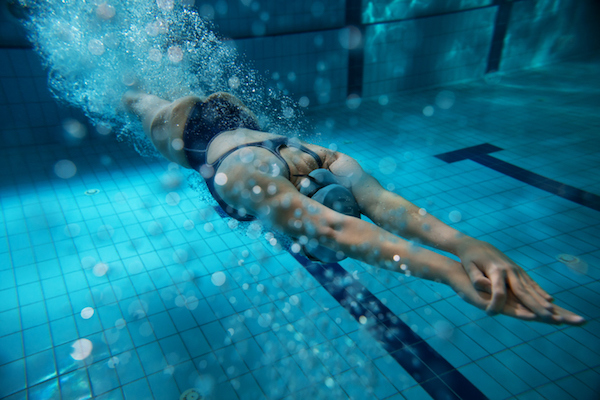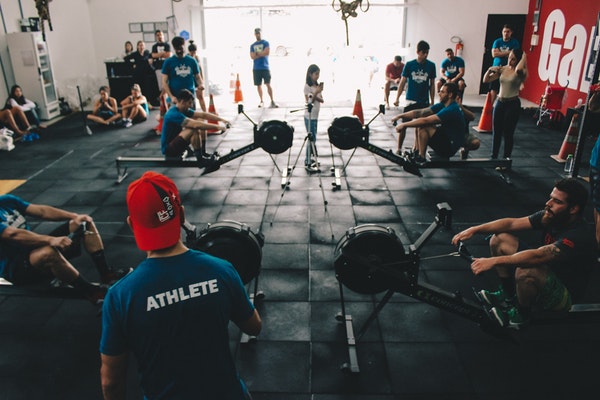
Can Exercise Lower the Risk of Glaucoma?
Exercise is an important part of a healthy life and reducing the risk of glaucoma is just one more benefit to being active.
As if we need one more reason to hop on that treadmill, studies show that exercise can have a positive effect in lowering eye pressure. Your eye doctor will tell you that keeping eye pressure at the right levels is important because it helps the eye maintain its shape. But if pressure gets too high, it can have harmful effects, specifically on the optic nerve. Glaucoma is a common disease that results from damage to the optic nerve. And once you have the diagnosis, unfortunately it doesn’t go away. However, there is some good news. Glaucoma is treatable and the mainstay method to prevent vision loss in patients with glaucoma is to lower eye pressure. Reducing pressure in the eye can not only treat glaucoma, it can prevent it as well.
Lowering eye pressure is successfully achieved by eye drops that patients use on a daily basis. Interestingly enough, studies have shown that cardiovascular activity can also help lower eye pressure.
How does it work?
Blood flow in the eye directly affects pressure in the eye. As blood flow increases, eye pressure decreases. So, when you’re jogging around the park, sprinting for that tennis ball, or finishing a lap in the pool, blood flow to your body is increased and your eye pressure is transiently lowered. A recent study found that the most physically active people had a 73 percent lower risk of glaucoma when compared to the least active people.
Specifically, cardiovascular activity has shown to be the best at reducing eye pressure. Thirty minutes of aerobic exercise five days per week decreases glaucoma risk by 50 percent when compared to those with a sedentary lifestyle. Whether you have glaucoma and want to take an active role in your disease or you want to lower your risk of developing glaucoma, exercise is on your side.
If you already incorporate exercise into your weekly routine, that’s great. You are definitely taking an important step to Live in Your OcularPrime! If you think you should be working out more, there’s no better time than now to step up your game. Beginning a new workout routine can seem daunting, but it doesn’t have to be. If you need some help, follow these four tips to spring into action:
1. To gym or not to gym?
A proactive step is to decide whether or not you’re a gym person. If you are, it’s a good idea to invest in a gym membership. You can view it as an investment in your future, healthier self. While at the gym, you can also take advantage of a fitness class or personal trainer so you don’t have to think too much. Joining is also a gym is a great way to change up your workout routine. For example, if you’ve become bored on the elliptical, try the stationary bike, the stair climber, or the treadmill.
If the gym is not for you, that’s okay! You can always choose the home activity or outside routine that works for you. Walking, running, or biking is a great way to get outside and enjoy your neighborhood or local park.
2. Actually, don’t reach for the stars
If you’re not regularly running, chances are you won’t go out and crush a 5K with little experience. And that’s okay! Many people quit working out because they set their expectations too high. Instead of 5K, start with a mile or two. You can run for a couple of minutes, then walk for a minute, until you build up enough endurance to run continuously. Definitely don’t beat yourself up and try to do too much early on. It’s better to be kind to yourself and to your body. Start on the ground, and before you know it, you will be eye level with the stars.
3. Keep a journal
Keeping a journal can help you monitor your own progress and keep you motivated. Maybe two weeks ago you tracked fifteen minutes on the elliptical, now you just completed a thirty-minute workout! Tracking your improvements can provide motivation. It can also give you something to brag about to your friends.
4. Make it fun!
Let’s be honest, people generally don’t like to do things that aren’t fun and enjoyable. Exercising isn’t always fun, but you can do some things to enhance the process. Find your favorite podcast and listen to it on the bike, at the gym, or while walking in the park. Get a workout buddy who can not only keep you company, but also keep you accountable. Reward yourself for finishing milestones like completing your first week or month of your workout routine.
It goes without saying, exercise is an important part of a healthy life and reducing the risk of glaucoma is just one more benefit to being active. Moreover, if you have glaucoma, exercising can help you take control of your disease. Exercise cannot replace eye drops, but it can help augment their use.
Live in Your OcularPrime by exercising today.
Can exercise lower the risk of glaucoma? The answer is a resounding YES according to OcularPrime contributor Laura Karle. She’s currently a first year student at SUNY School of Optometry in New York City. If you have any questions, you can contact her using the form below.
Sources:
- PhD, C. P. (2017, November 15). Exercise may protect you from glaucoma. Retrieved from https://www.medicalnewstoday.com/articles/320077.php
- Physical activity may lessen glaucoma risk. (n.d.). Retrieved April 15, 2019, from http://www.aoa.org/news/clinical-eye-care/glaucoma-and-exercise







